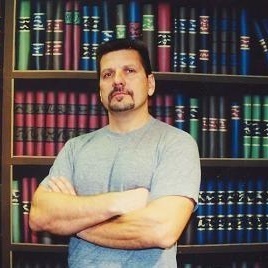>
> Transgender Prisoners Suffer Abuse at Record Numbers
> June 12, 2017 Aviva Stahl
>
>
>
>
> This story appears in the June issue of VICE magazine.
>
> One excruciatingly hot day in June 2015, Gretta Soto Moreno returned in a state of distress to her cell in Eloy, a grim privately run immigration detention center south of Phoenix. A volunteer from a local immigration support group had been visiting, and visits usually buoyed her spirits. But that day Soto Moreno had felt threatened by a fellow detainee in the visiting room-men at Eloy had been sending menacing notes to gay and transgender detainees, and she was growing increasingly fearful. Worse, she suspected that a guard at the facility, someone she claims had sexually harassed her in the past, had purposefully arranged for the frightening encounter.
> For two long years, Soto Moreno had kept her feelings bottled up. There was the stress of knowing violence might be just around the corner, the anger rooted in the administration’s casual indifference, and the torment of never knowing when she’d get out. Would she be released on parole? Would she be granted asylum? Would she be allowed to return to her life in the United States, the one she’d built for herself over the past decade-finally dressing and living as the woman she really was?
> In a haze of emotion, Soto Moreno picked up a razor that she had hidden in her cell-she used it to shave-and sat down on the toilet to pee. Then she saw a part of herself she’d always hated. Her hands did the rest.
> “I pulled my skin by the scrotum, and I just cut over and over there and cut them off,” she told me in an interview last summer. I had just met Soto Moreno, a 44-year-old transgender woman from Mexico. She was sitting next to me in my rental car as we drove to an immigration detention center for a visit. Her dark hair was pulled back into a top bun, exposing her broad features and meticulous makeup.
> Gretta Soto Moreno spent 264 days at an immigration detention center for transgender inmates in Santa Ana, California. Immigration and Customs Enforcement detains an average of 65 transgender women every day.
> I tried to turn and see the expression on her face. She was staring straight ahead. “With my blood, I write down on the wall, ‘Please more respect to LGBT people,'” she told me. “And I got to another wall, and I say, ‘More respect to trans women.'”
> I asked if she felt faint at the time, and she said no-she was there in her cell but also not. A counselor noticed that she was bleeding and called for help. Soon an ambulance arrived. Soto Moreno had surgery and spent three days in the hospital.
> After she was released back into custody of Immigration and Customs Enforcement (ICE), she was returned to Eloy and placed in a suicide-watch cell. “It was the most disgusting thing,” she said. “There was shit all over the place.”
> Soto Moreno’s experiences, although disturbing, are far from unusual. Anyone locked up in America’s prisons and jails risks facing deplorable conditions, but for trans people, the experience is often defined by daily brutalities, including long stretches in solitary, a denial of gender-affirming healthcare, and physical and sexual violence. These issues have become paramount in a sprawling immigration detention system that seems likely to grow even larger: Under the Obama administration, ICE locked up as many as 35,000 people each day; the Trump administration is reportedly in the process of increasing that number to 80,000.
> In March 2016, Human Rights Watch (HRW) published findings of an extensive investigation into abuses against trans women in US immigration detention, based on interviews with 28 former detainees. The report details numerous instances in which transgender women had been raped or sexually assaulted while in immigration detention, either by detainees or guards, as well as several accounts in which ICE staff refused to adequately respond to reported assaults. It also notes that transgender women in detention sometimes spend weeks or months in solitary confinement-allegedly for their own protection.
> In recent years, ICE has been trying a new approach to detaining trans women. About a week after she cut herself, the ICE supervising officer at Eloy called Soto Moreno into his office. He offered to transfer her to an immigration detention unit in Orange County, California, in the city of Santa Ana, which was strictly for transgender women and gay men (the two populations were later split into separate pods). Initially created in 2011, the unit was supposed to keep trans women safe-or at least safer than they might otherwise be if held in male facilities. She enthusiastically agreed. But creation of the trans unit has not come without controversy, and some LGBTQ immigration activists have staunchly opposed the move, part of a debate that would come to embroil Soto Moreno’s future and the futures of all trans women detained by ICE. At the heart of the debate is the question of what our country would look like if it were truly safe for trans people, and whether the pod-or any detent
ion facility at all-could help make that dream a reality.
> On June 17, Soto Moreno was handcuffed on her feet, belly, and wrists, and loaded onto a bus and then a plane. Let’s see what’s going on, Soto Moreno remembers thinking when she arrived at the unit. If something doesn’t change, I have to quit my life.
> Soto Moreno was born in 1972 and raised in the Martín Carrera neighborhood of Mexico City. As a kid, she used to peer out her second-story window to watch the drug dealers do their business below, and she’d sometimes see trans women working the streets, too. She was seven when she first felt the desire to dress as a girl. “Every single kid, they noticed I was different, even when my mom made me dress up as a boy,” she told me.
> At school, she would get beat up, and at home, the abuse would continue. At one point, her mother recruited her uncle to “teach her how to be a man.” As time passed, she would sometimes wear women’s clothing or put on makeup, but only in private.
> One evening, in her early 20s, a group of police officers assaulted her after one cop noticed she’d accidentally left on some eyeliner. The beating was brutal. She realized she could never explore her gender identity in Mexico-where, according to a 2016 report by the Transgender Law Center, transgender women face an epidemic of violence and are often specifically targeted by the military and the police.
> As time passed, she started thinking, I hear that in the United States, gay people are more free than here. In September 2003, when she was 30, she decided to come to the US, crossing over land from Nogales through the Arizona desert. She says she personally didn’t find it too difficult-she’d been in the Mexican equivalent of the Boy Scouts in her youth-but she saw firsthand just how unforgiving the journey could be. “On our way, we found skeletons,” she told me. One time, she asked the smuggler for permission to light a fire in the nearby bushes so that Border Patrol would come and find the body.
> After about two weeks, she arrived safely in Phoenix and started working under the table as a dishwasher. She was still testing the waters in terms of coming out. It was a few years later, after a terrifying car crash, that Soto Moreno finally decided to start transitioning. My life’s too short to hide myself, she thought. “On that day, I decided to stop living my life as a man.” It was a slow process. At first, she only dressed up at night when she frequented Phoenix’s gay nightclubs. Around 2006, she began buying hormones on the street and giving herself injections.
> In 2011, Soto Moreno was arrested and spent a few weeks in jail before being handed over to ICE. (Due to her ongoing immigration case, she asked me not to publish any details about her arrests or criminal offenses.) It was while she was in detention that Soto Moreno decided to apply for political asylum. Her claim was initially denied, but she is still fighting for status. After about three months at Eloy, she was released on a $5,000 bond.
> A few months later, she was arrested again and passed from law enforcement into the hands of immigration agents. She ended up at Eloy for a second time. It wasn’t long before both detainees and ICE staff were allegedly subjecting her to sexual harassment. Soto Moreno was receiving visits from a local immigration-advocacy group that supported LGBTQ detainees, but the visits meant she had to be searched regularly. One particular guard, Officer Smith*, used to let his hands linger on her body. The third time he came over to search her, she grew nervous and afraid. “I opened my arms and my legs, and he was searching me, even on my arms.” She was wearing short sleeves at the time.
> “Is that necessary?” she asked the guard. He allegedly told her to shut up and cupped her left butt cheek with his left hand so that his thumb just touched her anus. She pleaded with him to stop.
> “If you move again, I’m going to accuse you of assault,” was his retort, she told me. When the search was over, she emerged into the visiting room shaking with anger. She had no good options: She could submit to the searches or risk an encounter with the riot squad and a stint in solitary confinement. She put in grievances about the improper searches and notified staff about what was happening, but nothing changed. ICE declined to answer any questions about Soto Moreno’s case and would not confirm or deny any details.
> The Bureau of Justice Statistics has estimated that there are about 5,000 transgender people locked up in prisons and jails across the United States-about a third of whom are estimated to experience sexual assault on the inside. There is also an average of 65 transgender women detained by ICE every day, many of whom are held in men’s facilities.
> One of the women named in the 2016 report by HRW, Sara V., stated that she had been assaulted at a privately run immigration detention facility in Arizona, although the report does not specify whether she was held at Eloy. During intake proceedings, Sara was placed in a cell with several other men, and two of them raped her, while a third stood in the window to block the guards’ view. “Three Honduran men started touching themselves in front of me,” Sara told HRW. “They said, ‘He thinks he’s a woman, but he’s a faggot… In our country, we kill these people.'”
> As for Soto Moreno, during her second stint at Eloy, she heard about a unit for gay men and trans women in Santa Ana, California. She thought it sounded “phenomenal.” So for a while she remained at Eloy, still hoping she could end up somewhere safer. Please remove me from this place, she thought. Because I don’t want to be here. I am being sexually harassed!
> On June 6, 2015, a volunteer came to visit her. Officer Smith called her over for a search. She refused. “I was crying. Lots of officers were coming over because I tried to refuse a direct order from an officer on duty,” she recalled. “It’s a big offense.” Some of the officers were dressed in riot gear. Soto Moreno was escorted to the manager’s office, and she told him what was going on. He told her that he would assign Officer Smith to the north side of the facility, so she wouldn’t have to see him.
> Soto Moreno told me she thought the episode must have pissed Officer Smith off, and she claims he decided to retaliate against her for reporting the abuse. An officer arranged for her to receive that day’s visit on the north side of the facility. That’s where the higher-security detainees at Eloy are held, including a group of men who had allegedly threatened Soto Moreno and other LGBTQ detainees in the past.
> When she walked into the visiting room on the more dangerous north side, her body grew tense-one of the detainees was part of the gang of men who had been threatening her, she believed. She told her visitor that it wasn’t safe and waved a guard over to let her leave.
> “When I came back to the pod, I was totally nervous. I was angry. I was anxious.” She tried to talk to a counselor she trusted, but the woman told her she was busy. She shut her door and started pacing the room. “I was totally blacked out.”
> This was when she carried out her act of self-mutilation. She remembered she had a razor hidden away. She took it out and removed the blade. “I took the knife, and I was thinking, What do I do now?” Soto Moreno tilted the blade back and forth. She watched the reflection of the light as it danced up the blade.
> “I was extremely angry-you cannot imagine that anger.” Soto Moreno thought about where to cut herself. That’s when she sat down on the toilet. “I have the knife in my hands, and I just take it off,” she said. “No pain, nothing.”
> When Soto Moreno finally arrived at the Santa Ana City Jail, in the early hours of June 18, 2015, the sky was pitch black, and she was exhausted. Her wounds-which had been wrapped in gauze as a stopgap until being transferred to a public hospital in Phoenix for surgery-had by now scarred over. She and about six men were transferred out of the van and placed in intake cells. One by one, they were called up to be strip-searched and handed a set of the jail’s orange uniform.
> The trans pod at Santa Ana emerged as result of legal advocacy on behalf of LGBTQ immigrant detainees. The unit first opened in 2011, shortly after the National Immigrant Justice Center (NIJC)-an immigrant rights group based out of Chicago-filed a complaint detailing the rampant sexual violence and long-term isolation of gay and trans detainees with the Department of Homeland Security’s Office for Civil Rights and Civil Liberties. According to Keren Zwick, Soto Moreno’s lawyer and a managing attorney at the NIJC, ICE established the Santa Ana unit shortly after the complaint was filed.
> At first, the unit operated in ad hoc, de facto fashion and housed transgender women alongside gay and bi men. In 2012, the agency went public with news about the pod, and in the summer of 2014, the pod was split into two, one for transgender men and another for gay or bi-identified cisgender men. Since the official opening, ICE has also been taking other steps in the name of safeguarding transgender women. In June 2015, ICE issued a Transgender Care Memo, which put in place intake processes for detainees who identify as transgender and called for the establishment of a “Transgender Classification and Care Committee” to evaluate housing and security needs.
> During Soto Moreno’s intake, a guard explained the strict rules of the trans unit to her-like not being permitted to hug or even shake hands with anyone else or share food bought from the commissary. “All the rules are just to protect themselves-no rule is to protect us,” she said. Still, she was hopeful that things at Santa Ana would be better than Eloy. She was brought up to the fourth floor, to the module where the trans unit is housed.
> The pod was composed of two tiers, arranged in an L-shape, with cells lining the two walls farthest from the entrance. Bunk beds were tucked into the corner of each small cell. A frosted window, about 6 inches wide and 36 inches long, let in a narrow band of light.
> Soto Moreno told me that one of the worst aspects of being at the trans pod was the confined space and almost total lack of windows. Once they’re in the unit, women only leave the building to go to court, which means they can spend months or even years without feeling a breeze or seeing an open sky. As her time at Santa Ana passed-in total she would end up spending 264 days there-Soto Moreno started to feel increasingly claustrophobic. Her anxiety became such an issue that she reported it to the facility doctor, who offered her medication, though she didn’t stay on it for long. “Those pills made me feel like a zombie,” she said.
> Soto Moreno and the other detainees also allegedly regularly endured invasive strip and cavity searches performed by male guards. One day in January 2016, Soto Moreno claims a plate got chipped, and officers couldn’t locate the resultant shard. The officers were worried that one of the women may have hidden it away for use as a weapon. The jail staff locked the unit down. One by one, each woman was allegedly brought out of her cell and into the shower and told to strip. Surrounded by male guards, some of them armed, Soto Moreno was told to lift her genitals. She claims she was instructed to bend over and cough, and an officer used a flashlight to peer into her anus.
> Later, after they had strip-searched almost every woman on the unit, an officer suggested they look for the shard in the garbage, and there it was. “That day was the most humiliating day we had, ever,” Soto Moreno said. “It was the most disgusting thing.”
> Still, during the Obama years, the trans pod at Santa Ana became a point of pride for ICE, an agency that frequently garners bad press. When I emailed the ICE press office last summer, and asked to receive a tour of the unit, it happily obliged. Upon my arrival at Santa Ana, I was greeted by Virginia Kice, ICE’s western regional communications director, along with Andre Quinones, then ICE’s LGBT field liaison in Los Angeles. “ICE,” he told me, “is at the forefront of creating policies to safeguard transgender women.” (Quinones has since been promoted and now oversees ICE detention operations throughout all of Orange County.)
> “Some of the things we’re doing,” echoed Kice during the visit, “are incredibly progressive.”
> While Soto Moreno was at Santa Ana, adjusting to the claustrophobic conditions and invasive searches, a group of activists engaged in an act of civil disobedience in front of the jail, carrying signs calling for trans queer liberation and to end all detention.
> It was late 2015, and she had been there for about five months. “As soon as the protesters were outside protesting, we were locked down,” recalled Soto Moreno. She couldn’t hear or see the protests, but she knew about them from watching the coverage on TV and was able to meet some of the activists spearheading the campaign. One day, two staff members from a national initiative called Familia: Trans Queer Liberation Movement came to visit the unit, and Soto Moreno introduced herself. She began to learn about a movement to free all trans people from immigration detention.
> The #EndTransDetention campaign, as it was called, was first initiated in 2014 by a coalition of groups, including the Santa Ana–based Orange County Immigrant Youth United, the Oakland-based Transgender Law Center, and Familia-which was founded to advocate around issues affecting the LGBTQ Latino community. “It’s key we take away power” from institutions like ICE, said Jennicet Gutierrez, an undocumented transgender woman who is one of the group’s two paid staffers. ICE puts on “a friendly face, but in reality, they’re still oppressing communities, especially of color.”
> Jennicet and other advocates told me about the significant issues in the trans unit-like the hormone denials, frequent lockdowns, petty rules, and months trapped inside. In their view, ICE was exploiting the language of gay and trans rights in order to bolster its image, all while leaving trans women in harm’s way. Asked to comment for this story, Kice told me in an email that “ICE is committed to providing a respectful environment for all detainees, including those who identify as transgender.”
> But the campaigners calling to #EndTransDetention also saw their work as one way to link into the wider movement to end deportations. Jennicet told me it was essential that she found a political-organizing space that campaigned on behalf of everyone without status, “and that includes our families, our cousins, our uncles who might be undocumented but aren’t necessarily part of the LGBT community.” As Jorge Gutierrez (no relation to Jennicet)-another Familia staffer-explained, “If we’re able to fight for the most vulnerable, then we’re actually fighting for everyone.”
> Their work reflects a long-running tension in the movement to ameliorate conditions for the millions of people locked up in prisons, jails, and detention centers across the country: the reality that humanitarian reform efforts have often cemented, rather than diminished, the role of prisons in American life. The first penitentiaries were advocated for in the early days of the republic by liberals and humanitarians, looking to replace forms of punishment thought to be more barbaric and cruel, including whippings and stock and pillories. The first separate women’s prison, built in 1839 as a well-meaning attempt to reduce the harm and violence women faced on the inside, had only 81 cells. Today, more than 1 million women are either behind bars or on probation or parole. Even mandatory minimum sentences emerged, in part, because liberals thought they could make the criminal justice system fairer for minority defendants, by reducing racial disparities in sentencing.
> This history has engendered a tension between harm-reduction efforts and abolitionist aims, one that persists to this day. “The most difficult question for advocates of prison abolition,” the activist Angela Davis said in 2000, “is how to establish a balance between reforms that are clearly necessary to safeguard the lives of prisoners, and those strategies designed to promote the eventual abolition of prisons as the dominant mode of punishment.”
> But not everyone on the inside agrees on whether to oppose the creation of trans units. I’ve written to scores of trans women locked up in prisons across the United States, many of whom said they would feel safest if they were housed in a trans pod. One, Dee Dee-a trans woman incarcerated in New York-has been in solitary confinement for seven straight years. “Any solution for trans people housing should definitely not include any type of solitary isolation,” she wrote to me in 2014. “But should be a program in certain prisons that are within the general populations but housed onto themselves.”
> Synthia China Blast, another trans woman who’s spent years in the box in New York prisons and endured multiple sexual assaults, wrote to me in 2014: “BEING LOCKED UP IN A MEN’S PRISON IS TORTURE! IT’S HELL! Trans inmates (if forced to be in prison) should be housed in a trans unit. After sex-reassignment surgery in a women’s facility.” Activists working for a prison-free future are constantly forced to balance that goal with the longing of inmates for a more humane present.
> In March 2016, after being at Santa Ana for about eight months, Soto Moreno was finally released on a $7,500 bond. “Freedom is an unbelievable gift,” she told me. Nobody could give her orders. But being out was also tough-she had no work permit and no way to provide for herself. A group called Translatin@, which offers rental assistance and food vouchers to trans people recently released from prison or detention, helped her to survive. She was free, but it was hardly the life she’d hoped for when she fled Mexico, more than 12 years prior.
> While Soto Moreno was acclimating to life on the outside, the #EndTransDetention campaign was ramping up. A month before her release, in February 2016, activists had successfully convinced the Santa Ana City Council not to expand the number of beds contracted out to ICE from 200 to 300. Then in May, after a multi-day hunger strike by Familia’s staff, as well a local high school student, the city council voted to stop renting space out to ICE when its contract expires in 2020. Finally, in December 2016, the city council voted to reduce the maximum number of beds rented out to ICE to 128.
> Meanwhile, the all-Latino city council also directed the city manager to study the possibility of closing the jail facility altogether, by commissioning a $50,000 reuse study. For Jorge and Jennicet, the development exemplified a tangible way that immigration rights activists could support the work of groups like Black Lives Matter, and a broader movement against police violence and what many groups see as racist and reflexive use of incarceration. “Now, because of our campaign and how we’ve been pushing, there’s a whole conversation to close down the city jail completely and reuse it for something for the community,” Jorge told me.
> In February of this year, ICE sent written notification to Santa Ana city officials that it planned to terminate the detention contract, effectively killing the facility. “Recent actions by the city to drastically curtail the number of beds available at the city’s jail to house immigration detainees meant the existing detention contract was no longer viable or cost effective,” ICE’s statement read. (At the time of publication, the trans unit at Santa Ana was scheduled to be shut down on May 24.)
> The success of the campaign raises an uncomfortable question: What will happen to trans detainees? While conditions at Santa Ana were far from perfect, it is likely that trans women were safer in the unit than at other detention facilities across the country. “Before the pod existed, the de facto situation for the trans folks in immigration custody was to place them in administrative segregation,” Keren Zwick, the NIJC attorney, explained to me, “which was a euphemism, effectively, for solitary confinement.”
> Soto Moreno is worried about how detained trans women will fare now that the pod has been shut down. Most detention facilities don’t offer equivalent educational opportunities to those at Santa Ana. Plus, trans women may now end up in far more conservative and isolated parts of the country-like Texas, Arizona, or New Mexico-where there are fewer legal advocacy organizations for immigrants and a far smaller LGBTQ community to support them. “We might want ICE to release all trans detainees,” Soto Moreno told me, “but that isn’t going to happen anytime soon.”
> Under Trump, conditions inside immigration facilities will likely only get worse. This past April, the New York Times reported that his administration planned to relax rules meant to improve conditions inside detention facilities, including regulations on the use of solitary confinement. A second unit for trans women was supposed to open up this year at the Prarieland Detention Center in Texas, but advocates told me that plan appears to be on hold.
> Jorge sees what unfolded at Santa Ana in a different light-as tangible proof that activists can resist the proposed expansion of the immigration detention complex. “To have this victory has boosted communities’ morale, and it’s inspiring other folks across the country to say, ‘Yeah, we can also get ICE out of our city.'”
> After her release from detention, Soto Moreno waited for 260 days to get a work permit, surviving hand to mouth with the help of the Translatin@ Coalition. With the document now in hand, she is working part time with the coalition, doing outreach for its economic-empowerment program. She told me she’s saving up money to change her legal name. Her immigration case still colors every aspect of her life: The slightest false step could land her back in detention, and even the tiniest chink in the story she presents at hearings could lead to her petition being denied.
> But the United States is Soto Moreno’s home now, and she has nowhere else to go. So after almost three years in detention, facing sexual harassment, invasive strip searches, and constant lockdowns-“900 days in hell,” as she described them to me-she’s still slowly wending her way through the same immigration system she once hoped would keep her safe.
> *Officer Smith is a pseudonym because allegations of Soto Moreno’s charges against him could not be corroborated. Soto Moreno submitted official grievances with prison officials describing what happened in detail, and at one point, she submitted a report to local police. ICE would not respond to VICE’s request for comment on the alleged grievances, and whether or not officials took any measures to address them.
> UPDATE 6/7/17: After this issue went to print, ICE transferred a number of women from the trans pod at Santa Ana to Cibola County Correctional Center, a privately run detention center in Milan, New Mexico. According to local organizers, 11 trans women are currently held at Cibola, which they say is now functioning as a trans pod. ICE confirmed that the trans women at Cibola are being held separately from the general population.
> —
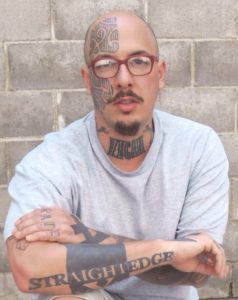 From Support Walter
From Support Walter
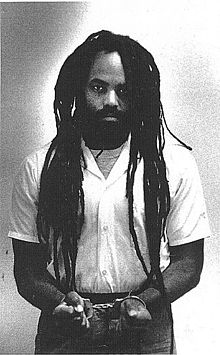


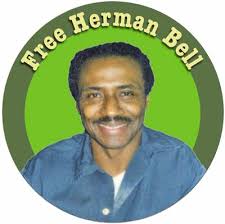
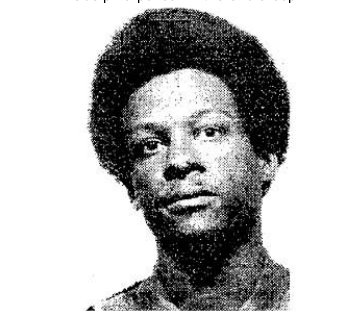

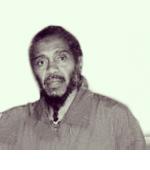
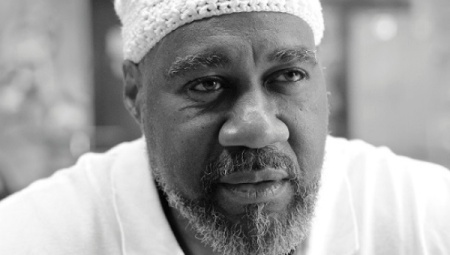
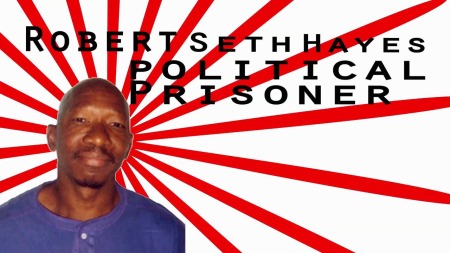

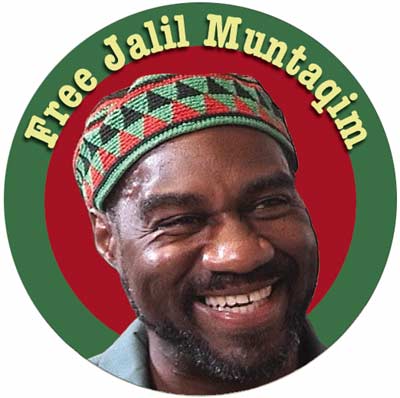
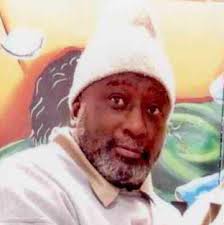

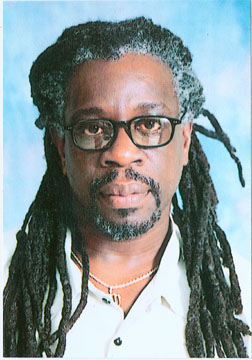

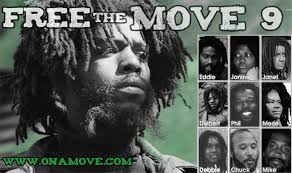
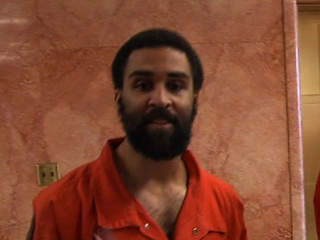




 #57978-060
#57978-060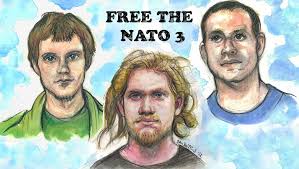
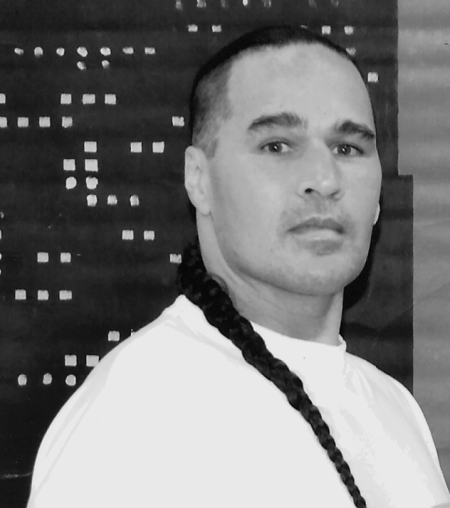


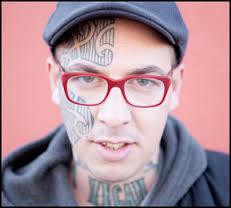
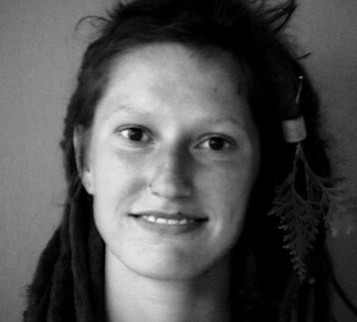
 >
> 




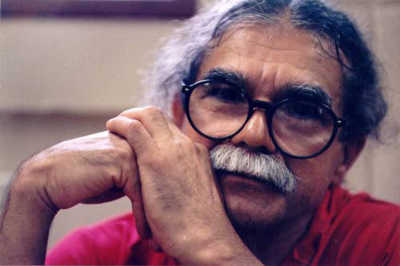 Vows to Continue Fight for Puerto Rico Independence
Vows to Continue Fight for Puerto Rico Independence